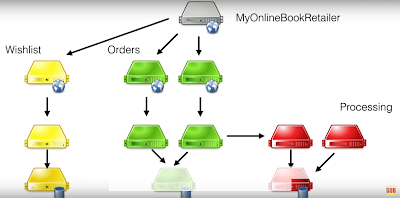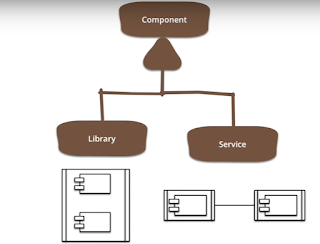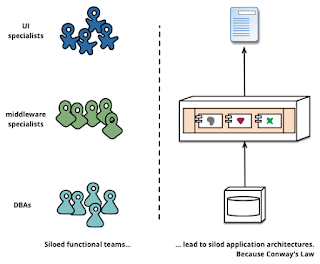StackTrace:
aused by: com.ibm.websphere.ce.cm.StaleConnectionException: null DSRA0010E: SQL State = 56038,
Error Code = -4,743
at
com.ibm.ws.rsadapter.spi.ServerFunction.handleStaleStatement(ServerFunction.java:695)
at
com.ibm.ws.rsadapter.AdapterUtil.mapException(AdapterUtil.java:2279)
at
com.ibm.ws.rsadapter.AdapterUtil.translateSQLException(AdapterUtil.java:1584)
at
com.ibm.ws.rsadapter.spi.WSRdbDataSource.getConnection(WSRdbDataSource.java:2374)
at
com.ibm.ws.rsadapter.spi.WSManagedConnectionFactoryImpl.getConnection(WSManagedConnectionFactoryImpl.java:1782)
at
com.ibm.ws.rsadapter.spi.WSManagedConnectionFactoryImpl.createManagedConnection(WSManagedConnectionFactoryImpl.java:1551)
at
com.ibm.ws.rsadapter.spi.WSManagedConnectionFactoryImpl.createManagedConnection(WSManagedConnectionFactoryImpl.java:1107)
at
com.ibm.ejs.j2c.FreePool.createManagedConnectionWithMCWrapper(FreePool.java:2160)
at
com.ibm.ejs.j2c.FreePool.createOrWaitForConnection(FreePool.java:1838)
at
com.ibm.ejs.j2c.PoolManager.reserve(PoolManager.java:3809)
at
com.ibm.ejs.j2c.PoolManager.reserve(PoolManager.java:3085)
at
com.ibm.ejs.j2c.ConnectionManager.allocateMCWrapper(ConnectionManager.java:1548)
at
com.ibm.ejs.j2c.ConnectionManager.allocateConnection(ConnectionManager.java:1031)
at
com.ibm.ws.rsadapter.jdbc.WSJdbcDataSource.getConnection(WSJdbcDataSource.java:644)
at
com.ibm.ws.rsadapter.jdbc.WSJdbcDataSource.getConnection(WSJdbcDataSource.java:611)
at
com.workbrain.tool.jdbc.safe.SafeDataSource.getConnection(SafeDataSource.java:52)
at
com.workbrain2.platform.tool.jdbc.proxy.ProxyDataSource.getConnection(ProxyDataSource.java:96)
at
org.springframework.jdbc.datasource.DataSourceUtils.doGetConnection(DataSourceUtils.java:111)
at
org.springframework.jdbc.datasource.DataSourceUtils.getConnection(DataSourceUtils.java:77)
... 138
more
---- Begin backtrace for Nested Throwables
java.sql.SQLException: null DSRA0010E: SQL State = 56038,
Error Code = -4,743
at
com.ibm.db2.jcc.am.gd.a(gd.java:752)
at
com.ibm.db2.jcc.am.gd.a(gd.java:66)
at
com.ibm.db2.jcc.am.gd.a(gd.java:135)
at
com.ibm.db2.jcc.am.so.c(so.java:2763)
at
com.ibm.db2.jcc.am.so.d(so.java:2751)
at
com.ibm.db2.jcc.am.so.a(so.java:2200)
at
com.ibm.db2.jcc.am.so.a(so.java:2176)
at
com.ibm.db2.jcc.t4.ab.h(ab.java:136)
at
com.ibm.db2.jcc.t4.ab.b(ab.java:41)
at
com.ibm.db2.jcc.t4.o.a(o.java:32)
at
com.ibm.db2.jcc.t4.tb.i(tb.java:145)
at
com.ibm.db2.jcc.am.so.ib(so.java:2169)
at
com.ibm.db2.jcc.am.so.a(so.java:3248)
at
com.ibm.db2.jcc.am.so.a(so.java:691)
at
com.ibm.db2.jcc.am.Connection.getJccSpecialRegisterProperties(Connection.java:8123)
at
com.ibm.db2.jcc.am.hf.getJccSpecialRegisterProperties(hf.java:1044)
at
com.ibm.ws.rsadapter.dbutils.impl.DB2UniversalUtilityImpl.getJccSpecialRegisterProperties(DB2UniversalUtilityImpl.java:386)
at
com.ibm.ws.rsadapter.spi.InternalDB2UniversalDataStoreHelper.addDefaultHPExtendedProperties(InternalDB2UniversalDataStoreHelper.java:2046)
at
com.ibm.ws.rsadapter.spi.WSRdbDataSource.getConnection(WSRdbDataSource.java:2322)
at
com.ibm.ws.rsadapter.spi.WSManagedConnectionFactoryImpl.getConnection(WSManagedConnectionFactoryImpl.java:1782)
at
com.ibm.ws.rsadapter.spi.WSManagedConnectionFactoryImpl.createManagedConnection(WSManagedConnectionFactoryImpl.java:1551)
at
com.ibm.ws.rsadapter.spi.WSManagedConnectionFactoryImpl.createManagedConnection(WSManagedConnectionFactoryImpl.java:1107)
at
com.ibm.ejs.j2c.FreePool.createManagedConnectionWithMCWrapper(FreePool.java:2160)
at
com.ibm.ejs.j2c.FreePool.createOrWaitForConnection(FreePool.java:1838)
at
com.ibm.ejs.j2c.PoolManager.reserve(PoolManager.java:3809)
at
com.ibm.ejs.j2c.PoolManager.reserve(PoolManager.java:3085)
at
com.ibm.ejs.j2c.ConnectionManager.allocateMCWrapper(ConnectionManager.java:1548)
at
com.ibm.ejs.j2c.ConnectionManager.allocateConnection(ConnectionManager.java:1031)
at
com.ibm.ws.rsadapter.jdbc.WSJdbcDataSource.getConnection(WSJdbcDataSource.java:644)
at
com.ibm.ws.rsadapter.jdbc.WSJdbcDataSource.getConnection(WSJdbcDataSource.java:611)
at
com.workbrain.tool.jdbc.safe.SafeDataSource.getConnection(SafeDataSource.java:52)
at
com.workbrain2.platform.tool.jdbc.proxy.ProxyDataSource.getConnection(ProxyDataSource.java:96)
at
org.springframework.jdbc.datasource.DataSourceUtils.doGetConnection(DataSourceUtils.java:111)
at
org.springframework.jdbc.datasource.DataSourceUtils.getConnection(DataSourceUtils.java:77)
at
com.workbrain2.platform.util.WbDataSourceUtil.getConnection(WbDataSourceUtil.java:74)
at
com.workbrain2.platform.svc.DbServer.impl.DbServerImpl.init(DbServerImpl.java:63)
at
sun.reflect.NativeMethodAccessorImpl.invoke0(Native Method)
at
sun.reflect.NativeMethodAccessorImpl.invoke(NativeMethodAccessorImpl.java:95)
at
sun.reflect.DelegatingMethodAccessorImpl.invoke(DelegatingMethodAccessorImpl.java:56)
at
java.lang.reflect.Method.invoke(Method.java:620)
at
org.springframework.beans.factory.support.AbstractAutowireCapableBeanFactory.invokeCustomInitMethod(AbstractAutowireCapableBeanFactory.java:1702)
at
org.springframework.beans.factory.support.AbstractAutowireCapableBeanFactory.invokeInitMethods(AbstractAutowireCapableBeanFactory.java:1641)
at
org.springframework.beans.factory.support.AbstractAutowireCapableBeanFactory.initializeBean(AbstractAutowireCapableBeanFactory.java:1570)
at
org.springframework.beans.factory.support.AbstractAutowireCapableBeanFactory.doCreateBean(AbstractAutowireCapableBeanFactory.java:539)
at
org.springframework.beans.factory.support.AbstractAutowireCapableBeanFactory.createBean(AbstractAutowireCapableBeanFactory.java:476)
at
org.springframework.beans.factory.support.AbstractBeanFactory$1.getObject(AbstractBeanFactory.java:303)
at
org.springframework.beans.factory.support.DefaultSingletonBeanRegistry.getSingleton(DefaultSingletonBeanRegistry.java:230)
at
org.springframework.beans.factory.support.AbstractBeanFactory.doGetBean(AbstractBeanFactory.java:299)
at
org.springframework.beans.factory.support.AbstractBeanFactory.getBean(AbstractBeanFactory.java:194)
at
org.springframework.beans.factory.support.DefaultListableBeanFactory.preInstantiateSingletons(DefaultListableBeanFactory.java:755)
at
org.springframework.context.support.AbstractApplicationContext.finishBeanFactoryInitialization(AbstractApplicationContext.java:757)
at
org.springframework.context.support.AbstractApplicationContext.refresh(AbstractApplicationContext.java:480)
at
org.springframework.context.support.ClassPathXmlApplicationContext.<init>(ClassPathXmlApplicationContext.java:139)
at
org.springframework.context.support.ClassPathXmlApplicationContext.<init>(ClassPathXmlApplicationContext.java:93)
at
com.workbrain2.platform.core.context.WbClassPathXmlApplicationContext.<init>(WbClassPathXmlApplicationContext.java:39)
at
sun.reflect.NativeConstructorAccessorImpl.newInstance0(Native Method)
at
sun.reflect.NativeConstructorAccessorImpl.newInstance(NativeConstructorAccessorImpl.java:86)
at
sun.reflect.DelegatingConstructorAccessorImpl.newInstance(DelegatingConstructorAccessorImpl.java:58)
at
java.lang.reflect.Constructor.newInstance(Constructor.java:542)
at
org.springframework.beans.BeanUtils.instantiateClass(BeanUtils.java:147)
Solutions: Change the value for the property validateNewConnection to : true. Stop and restart the server.































